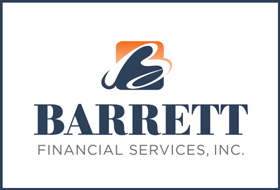 Though the United States may avoid a full-fledged recession, it’s undoubtedly a difficult time to be a consumer. Here are some ways to protect yourself.
Though the United States may avoid a full-fledged recession, it’s undoubtedly a difficult time to be a consumer. Here are some ways to protect yourself.
The fear of a recession looms large, and though it isn’t certain that we’ll enter recession territory in 2023, there’s no doubt we’re in a period of constraint for consumers. Inflation is still high despite the efforts of the Federal Reserve to cut spending with interest rate increases, and 2022 brought the worst annual performance for all three major indexes since 2008[1,2,3].
Understandably, this can cause panic among American consumers and pre-retirees, whether they have assets invested in the market or they’re simply looking to continue with their current lifestyle. With the times, however, our behavior and spending habits must change to give us the best chance to protect ourselves during periods of financial downturn. Here are some things you can do to counter volatile markets and economic declines.
- Cut Unnecessary Spending
One of the best ways to avoid a financial crisis is to cut unnecessary spending. That could mean more trips to the grocery store instead of your favorite restaurant, fewer luxury purchases or delaying your upcoming vacation. A properly structured and maintained budget typically accounts for all of your incoming and outgoing funds, so it can likely be a great place to start when looking for places to cut back. You may be forced to make some hard decisions, but the idea is for those decisions to pay dividends in the long run.
- Build an Emergency Fund
While an emergency fund might be seen as the most obvious form of protection against difficult financial times, nearly one-in-four consumers don’t have one [4]. Furthermore, 39% have less than a month’s worth of income saved in an emergency fund, and less than half would be able to cover a surprise $1,000 expense. A general recommendation is to have three to six months’ worth of expenses saved in your emergency bucket, giving you some flexibility if you’re forced to access that money. Additionally, you don’t need to make one lump sum contribution to your emergency fund. You can build it gradually, adding little by little until you have a balance you’re comfortable with.
- Pick Up an Extra Job
One way to supplement the difference in difficult times is to pick up an extra job to increase your total income. Though your finances often seem cut-and-dried, this is one area where you have the freedom to be a bit flexible and creative. Some ideas for an extra job include freelance or contract work, consulting, starting your own business, or even finding a part-time role at a local establishment where you already enjoy spending time, like a golf course. The possibilities are nearly endless, allowing you to have some fun with this secondary source of income. And who knows? It could lead you down a different career path that leaves you even more satisfied than your primary source of income does.
- Prioritize Financial Obligations
Market volatility, inflation, high interest rates, supply chain issues and other economic factors can be scary, but they’re even scarier when compounded with outstanding debt. It can always be a good idea to tackle debt to avoid falling into a situation where you’re beholden to that debt, seemingly allowing you little-to-no flexibility with your income. The sooner you enact a plan and clear that debt, the sooner you can begin building your emergency fund, making larger contributions to your retirement accounts or enjoying the perks of increased financial freedom.
- Look for Advantageous Investment Opportunities
While there are certainly no guarantees when it comes to investing in the market and no current iron-clad ways to dictate market performance or protect yourself from declines, opportunistic investors with a long time-horizon to retirement can take advantage of dips. Investors may be able to utilize these periods to their benefit by entering the market at a low point, or they could use a strategy called dollar cost averaging to continue investing or putting away money in their 401(k) at consistent intervals, thereby lowering their average cost per share. Though the big three indexes were down in 2022, they have a sustained history of long-term growth, potentially making declines a favorable time to enter the market.
- Use Protection-Based Strategies
Though growth can be enticing, sometimes protection for what you already have can be even more important. Diversifying your portfolio with a protection-based asset class, such as an annuity or a permanent life insurance policy, could be helpful through guaranteeing principal protection and index-linked growth. Despite allowing you to participate in market upside, these policies are not investments. Rather, they’re contracts with issuing insurance companies, and the guarantees are made by the claims-paying ability of those companies. These products and strategies can help you create a tax-free stream of income in retirement while protecting you from market volatility on the way there. If you think a protection-based approach may be the right strategy for you, we can help you decide based on your unique circumstances.
If you have any questions about protecting yourself from financial downturn, please give us a call. You can reach Barrett Financial Services in California at 619.473.8727.
- https://www.macrotrends.net/2526/sp-500-historical-annual-returns
- https://www.macrotrends.net/1319/dow-jones-100-year-historical-chart
- https://www.macrotrends.net/1320/nasdaq-historical-chart
- https://www.marketwatch.com/picks/this-is-the-surprising-generation-least-likely-to-have-even-1-000-in-savings-and-heres-what-they-need-to-do-about-it-01650321688
This article is for informational purposes only and is accurate to the best of our knowledge. It is not to be taken as investment or tax advice. in all cases we recommend that you work with financial, tax and legal professionals to find the strategies best suited to your individual situation.




